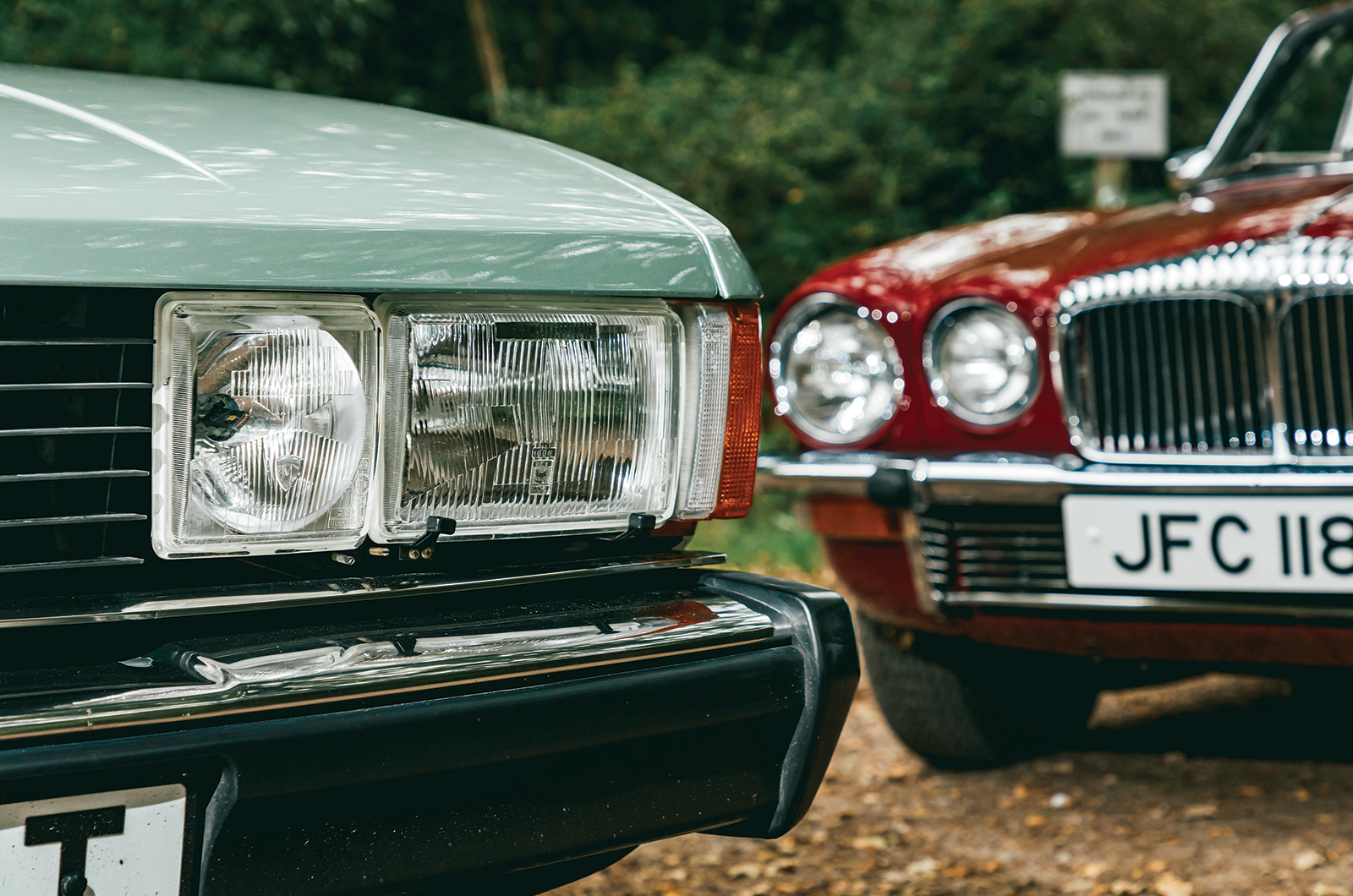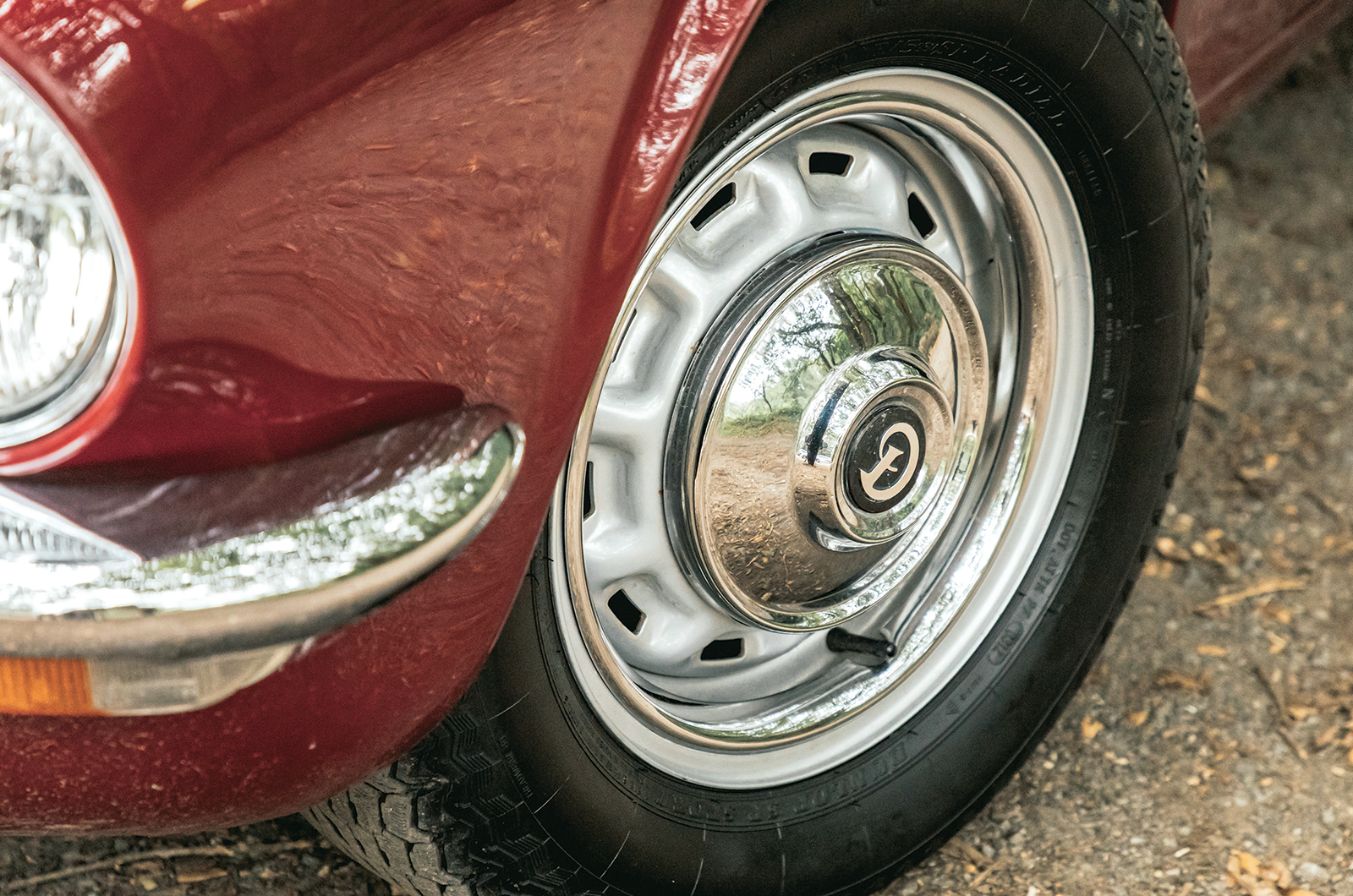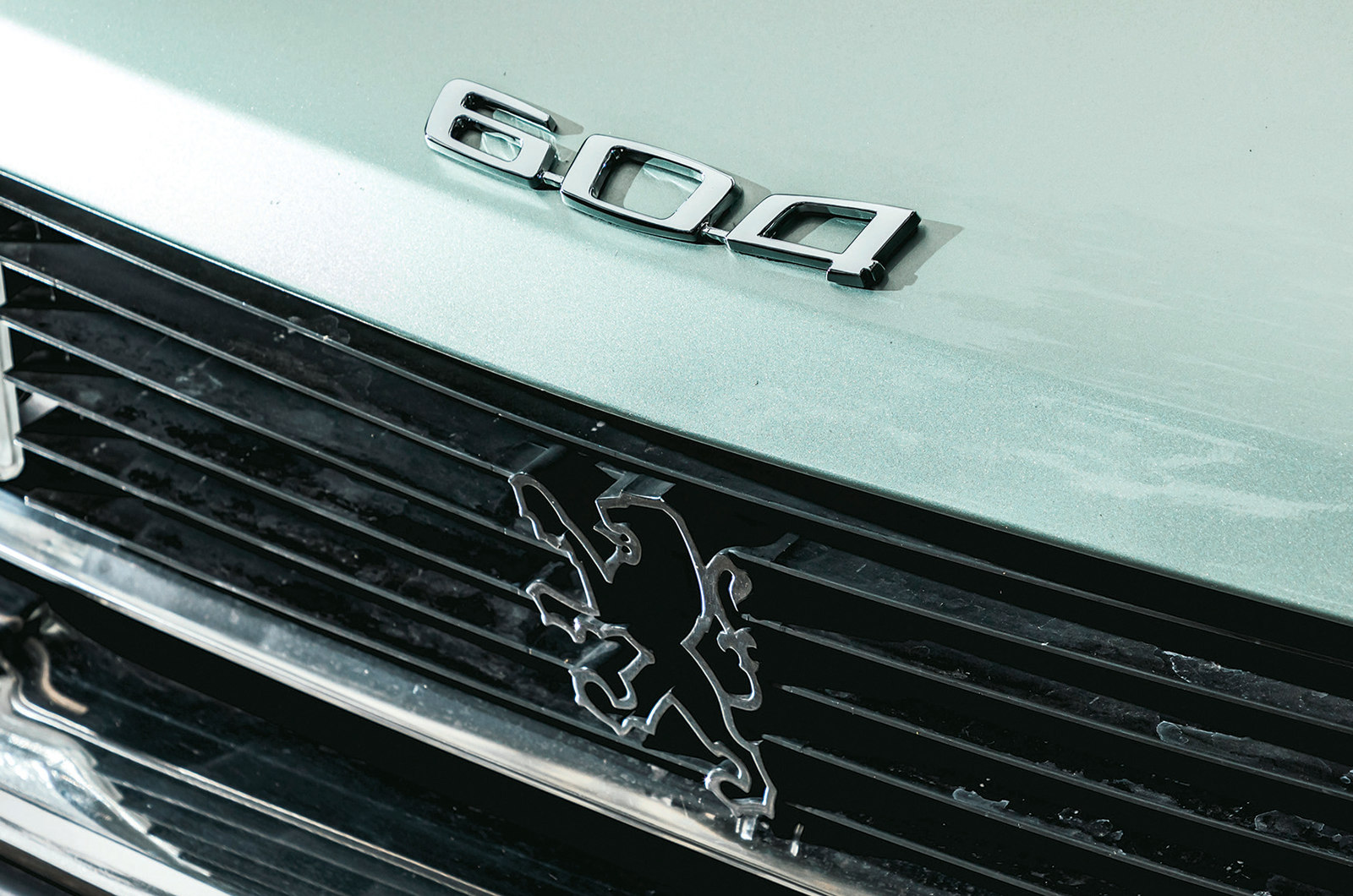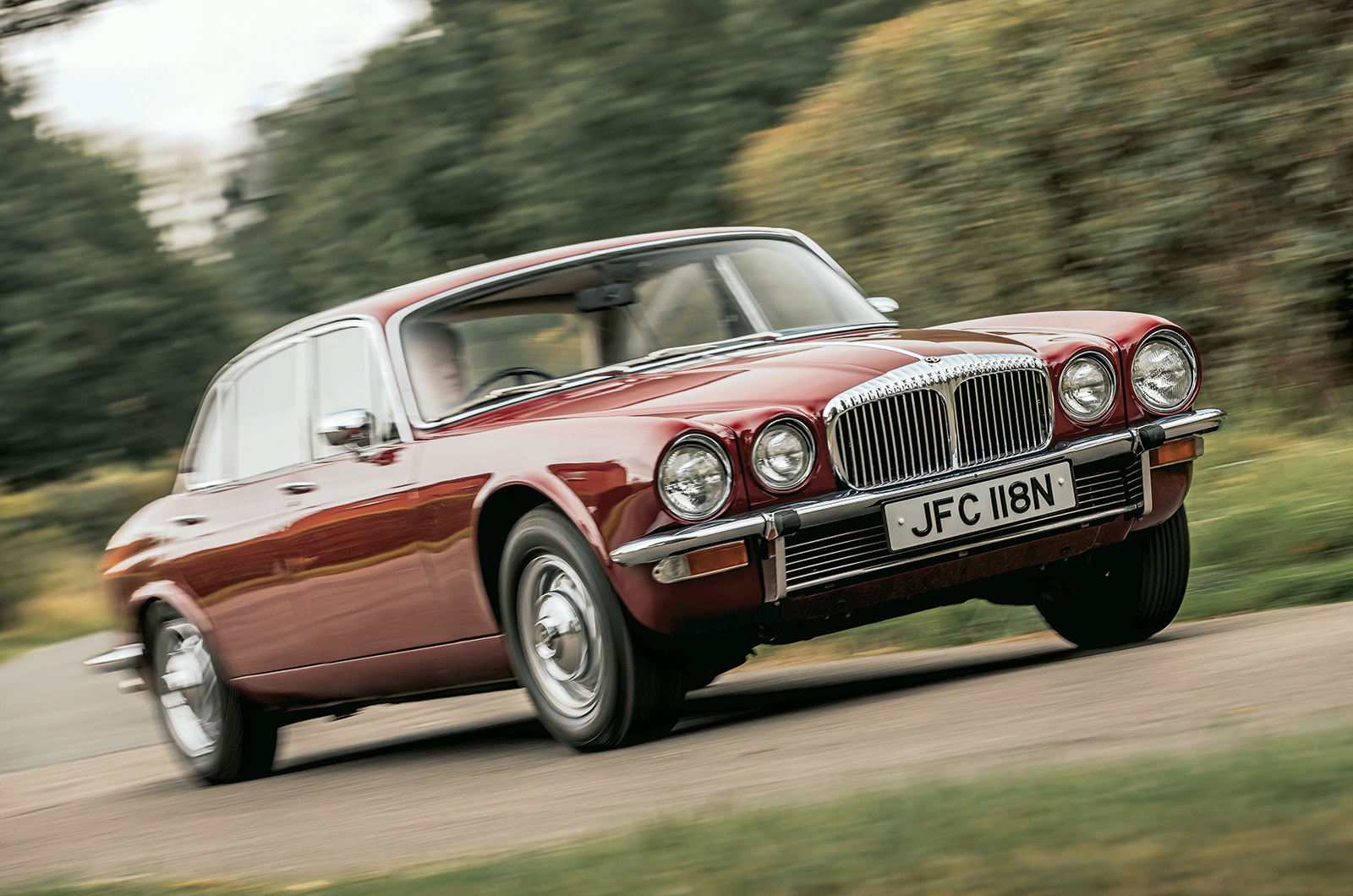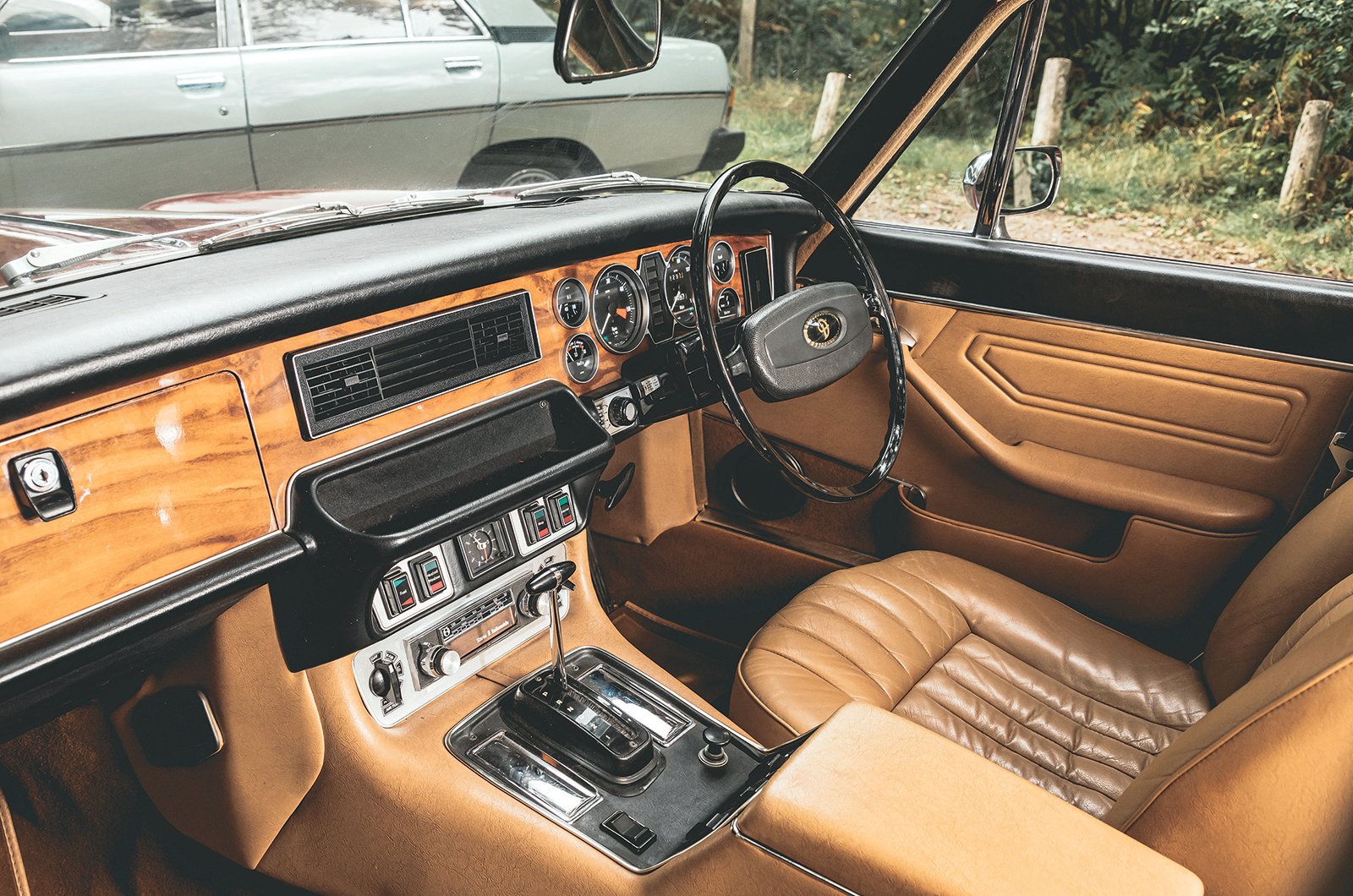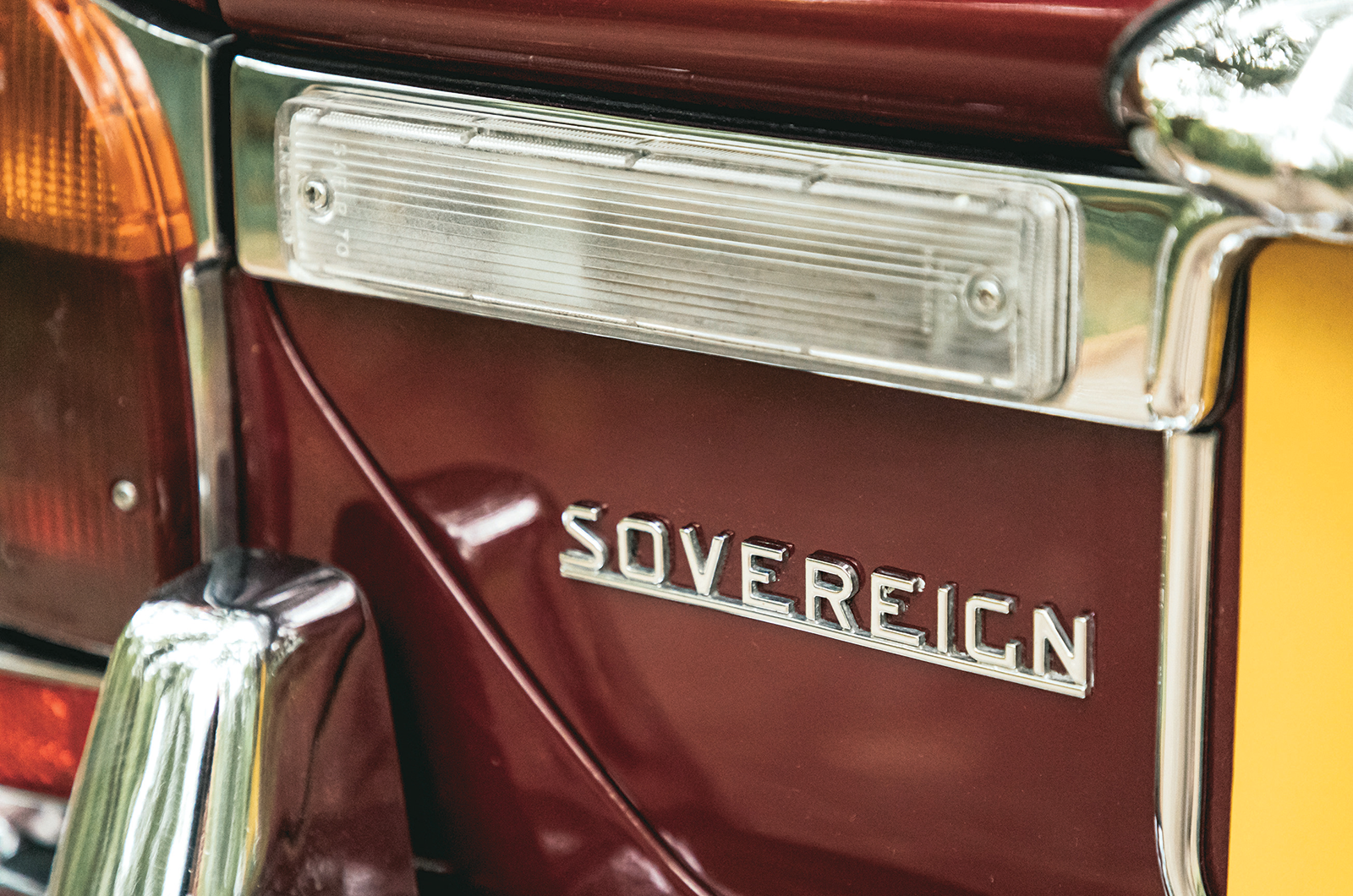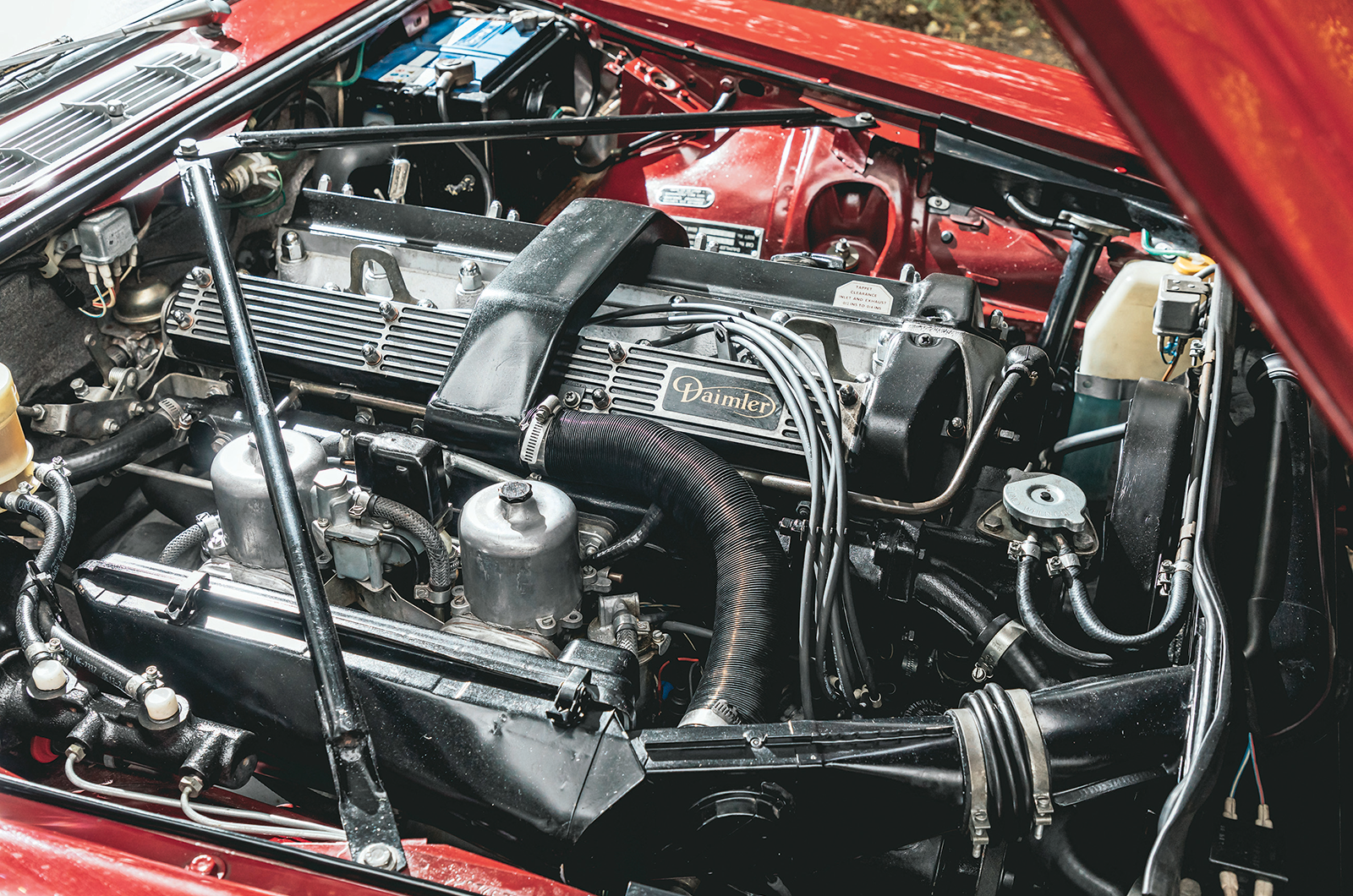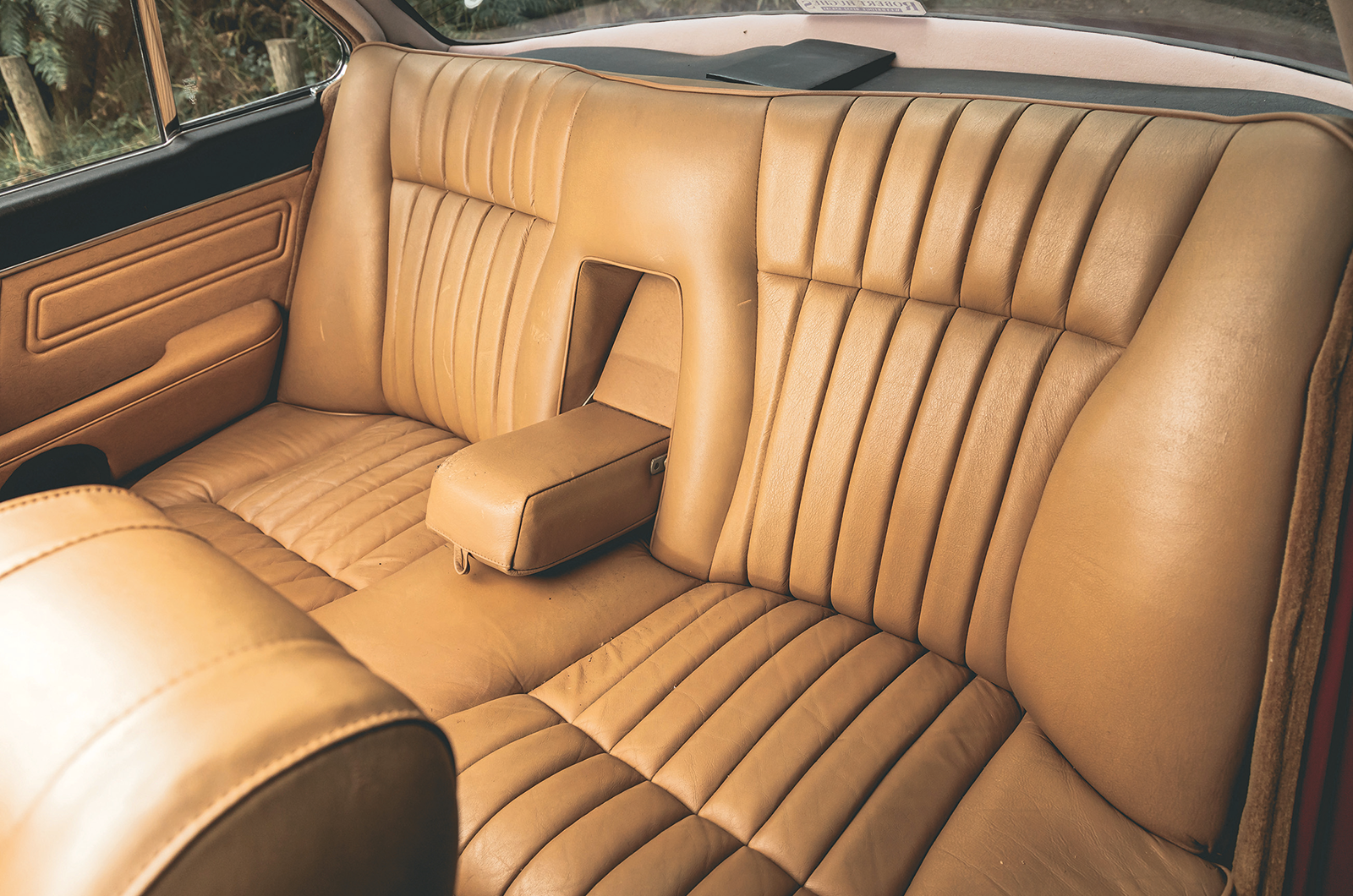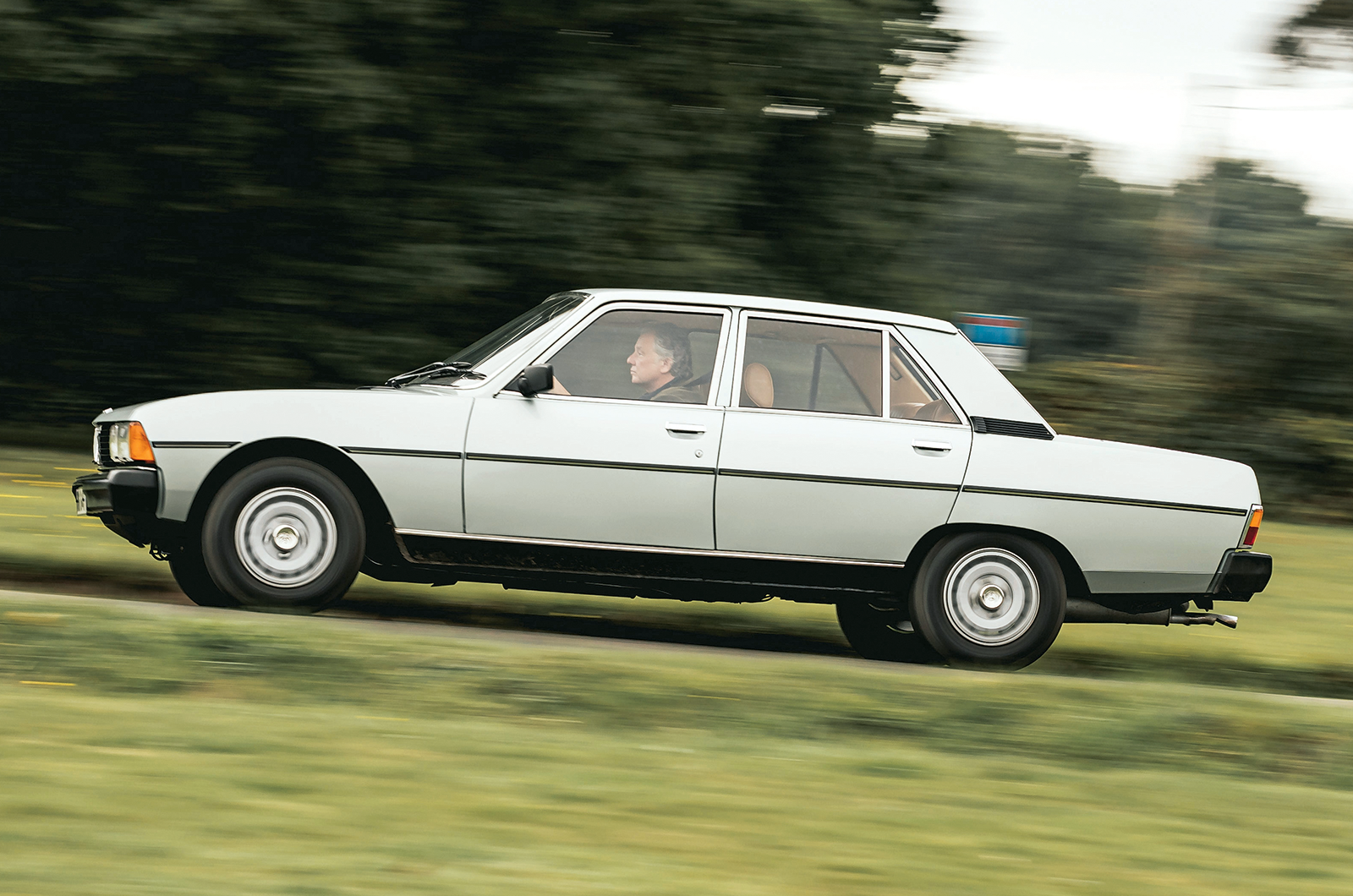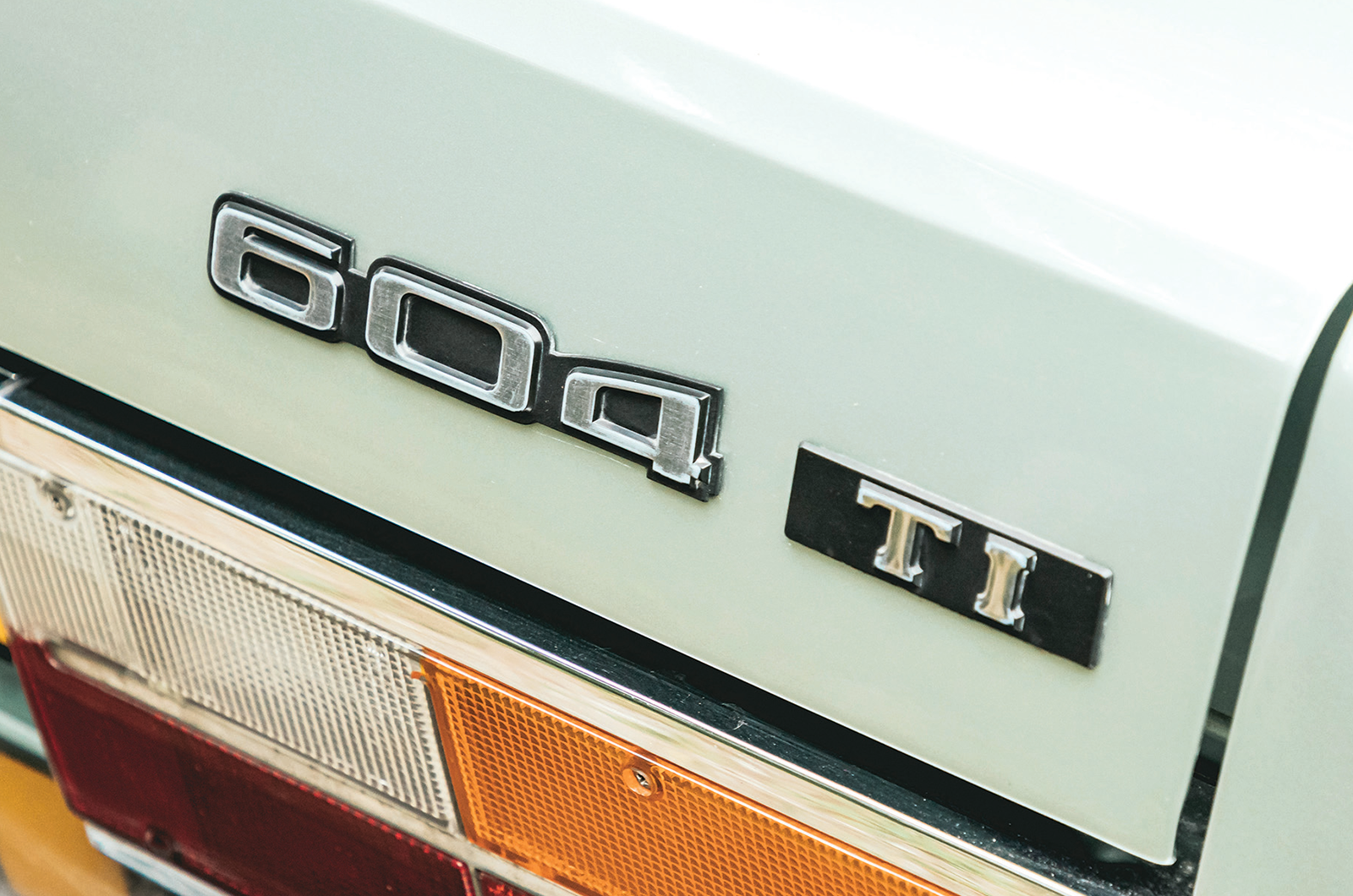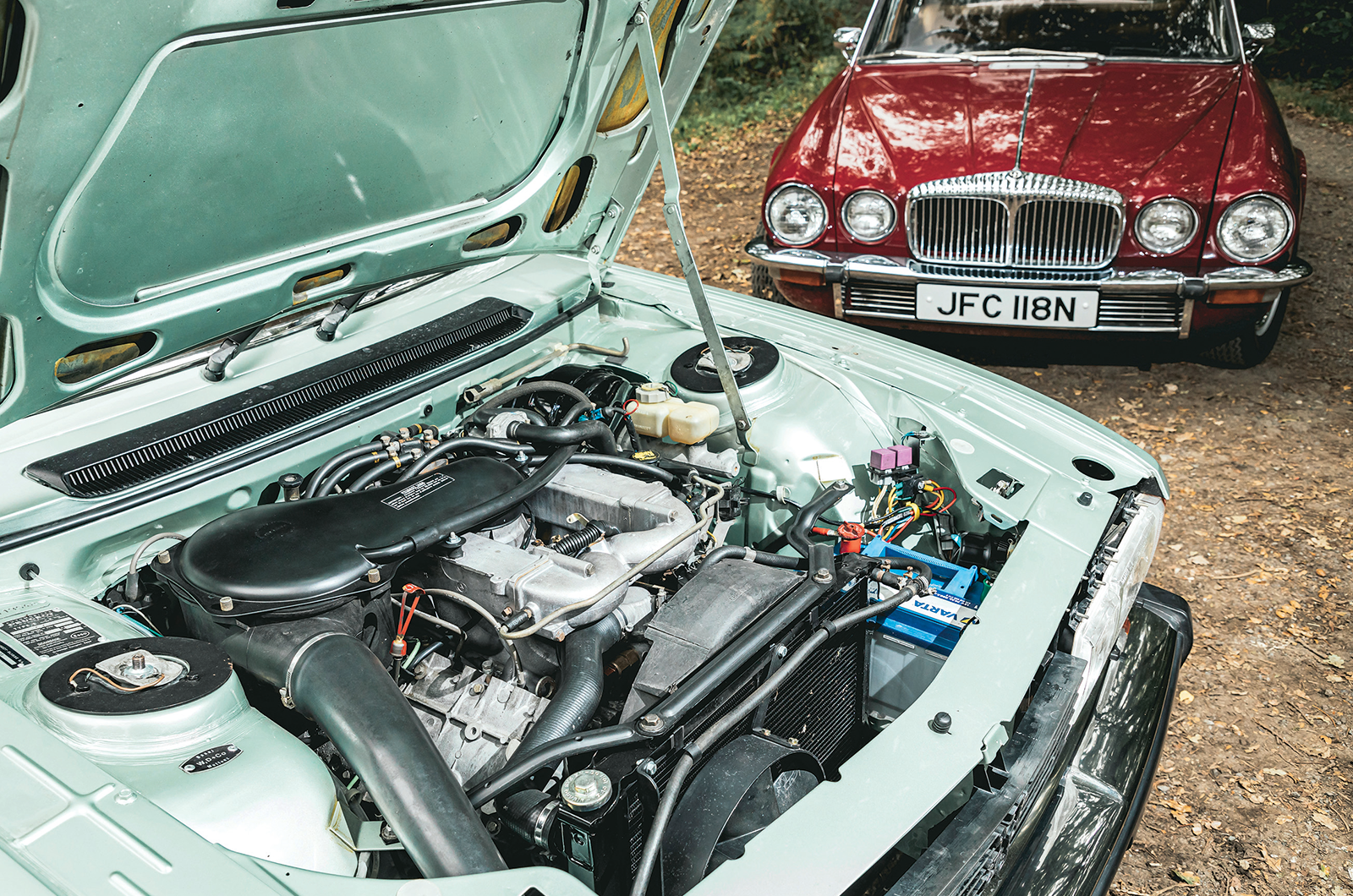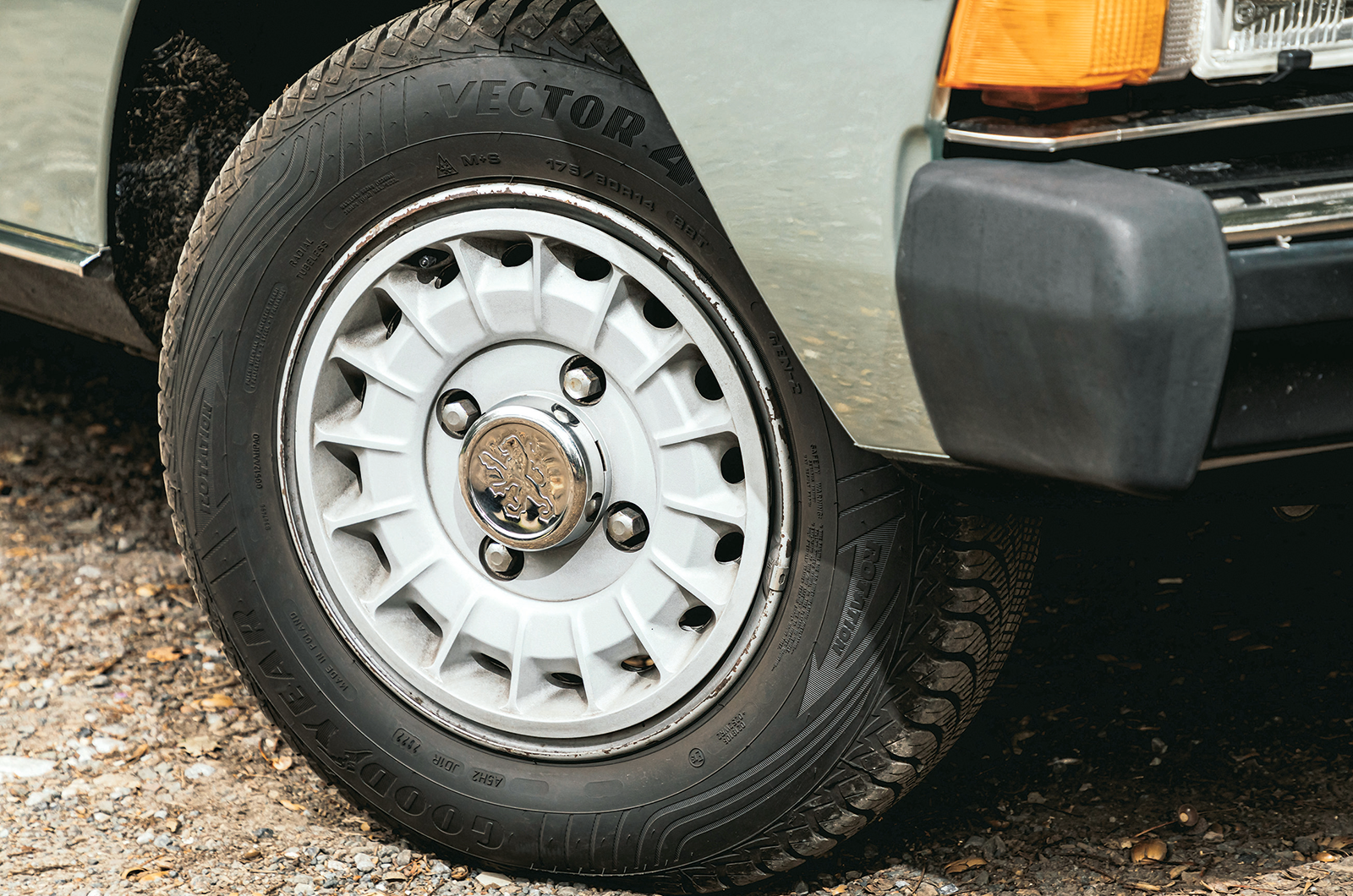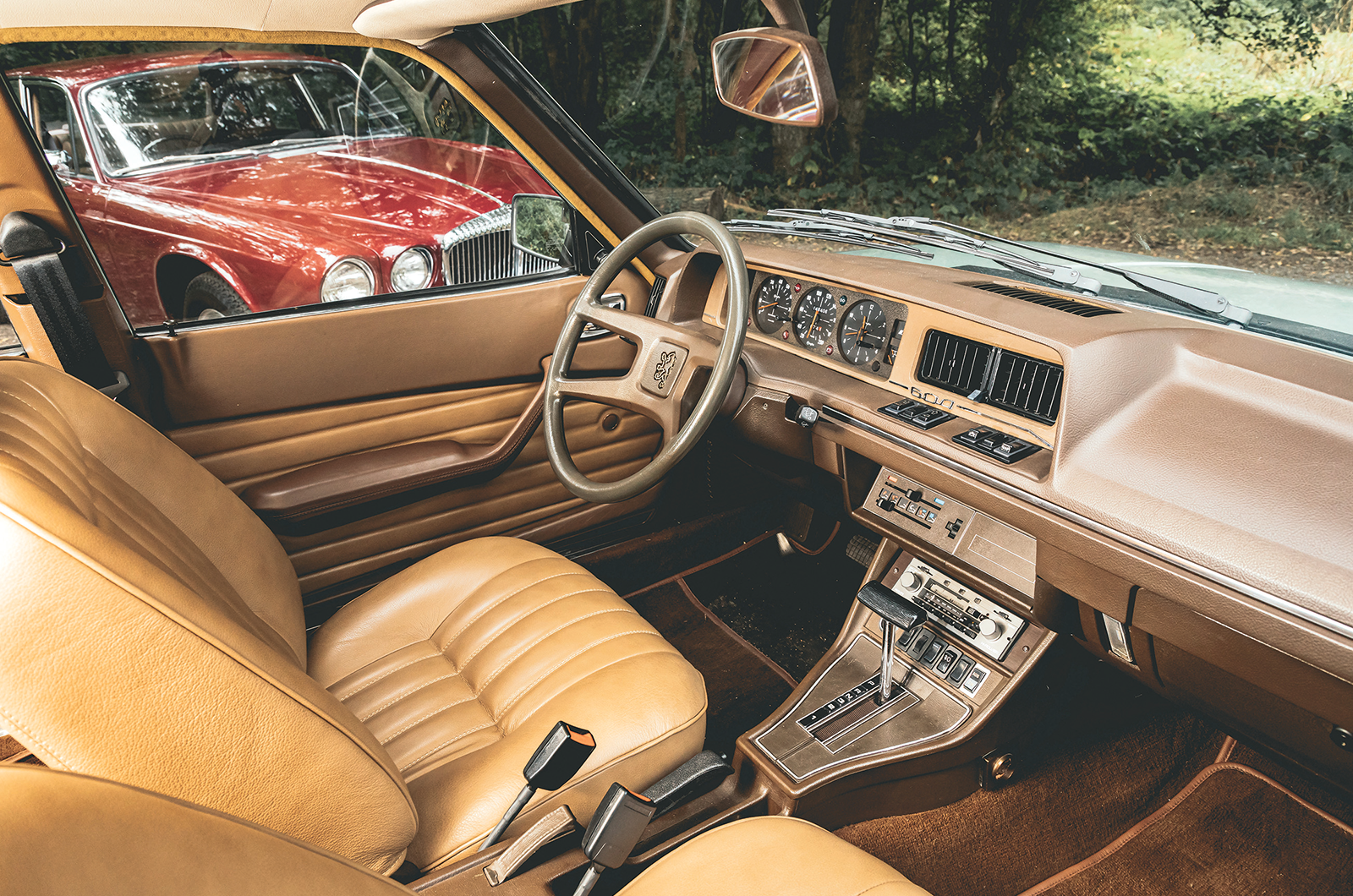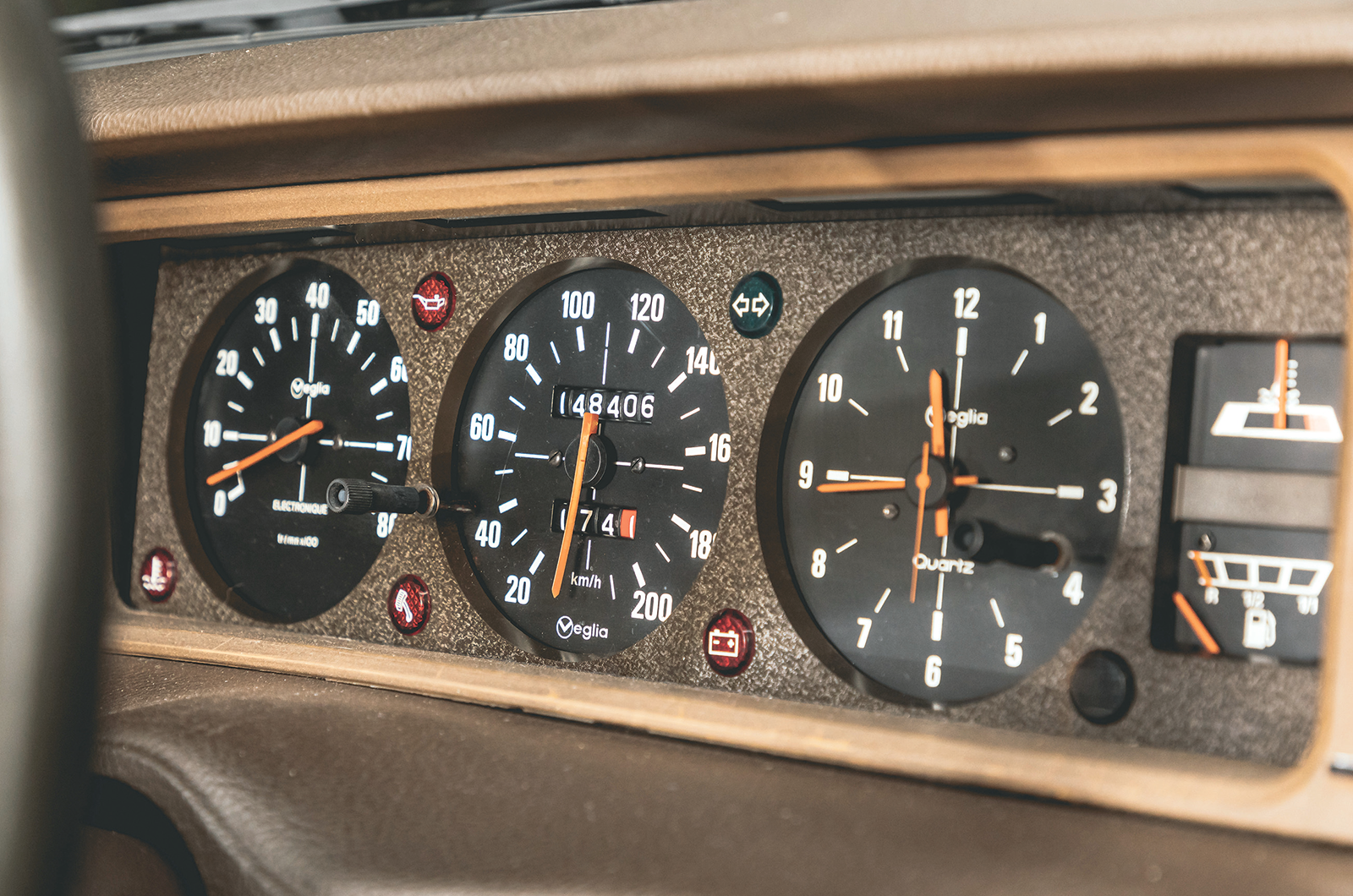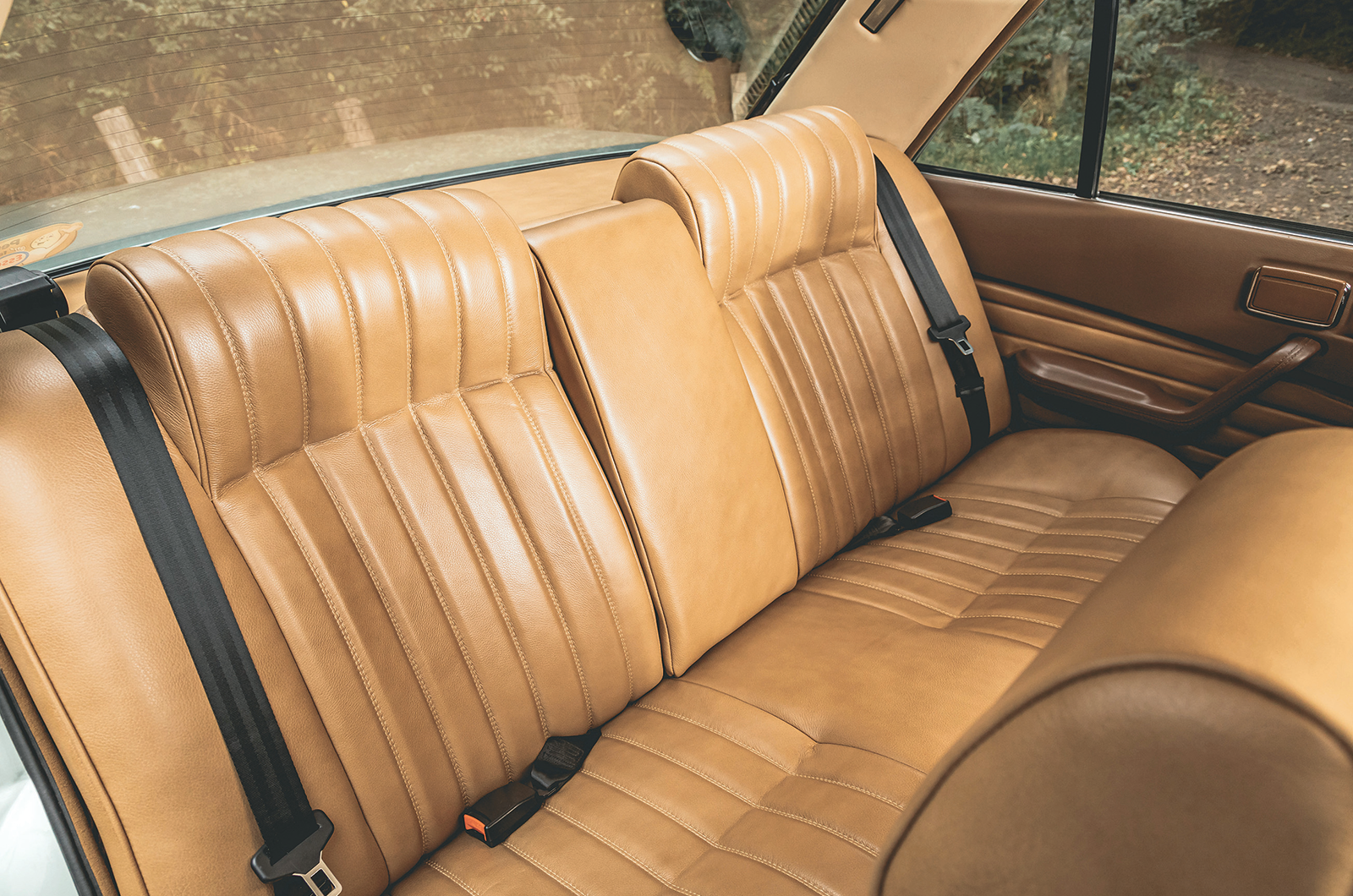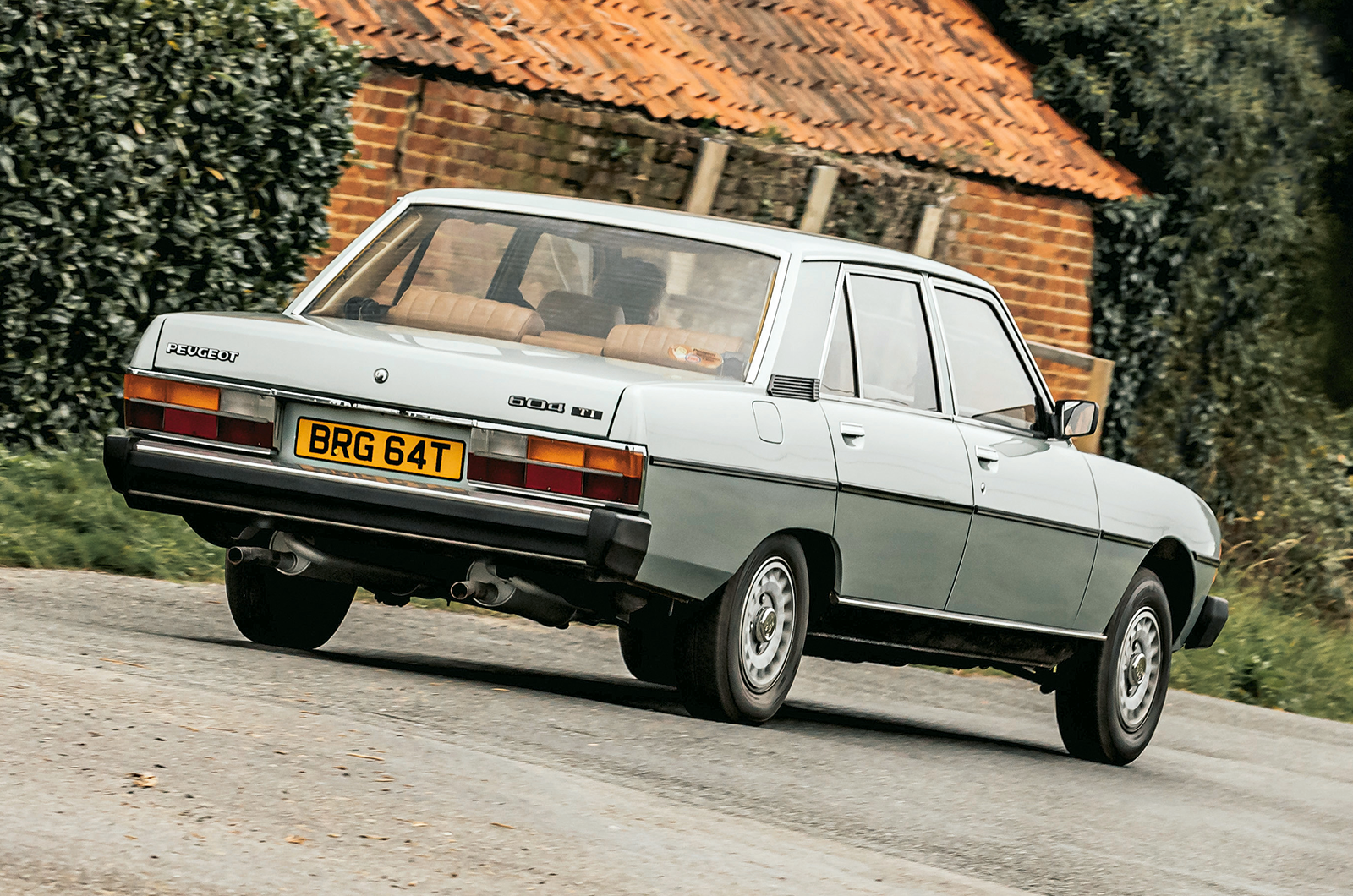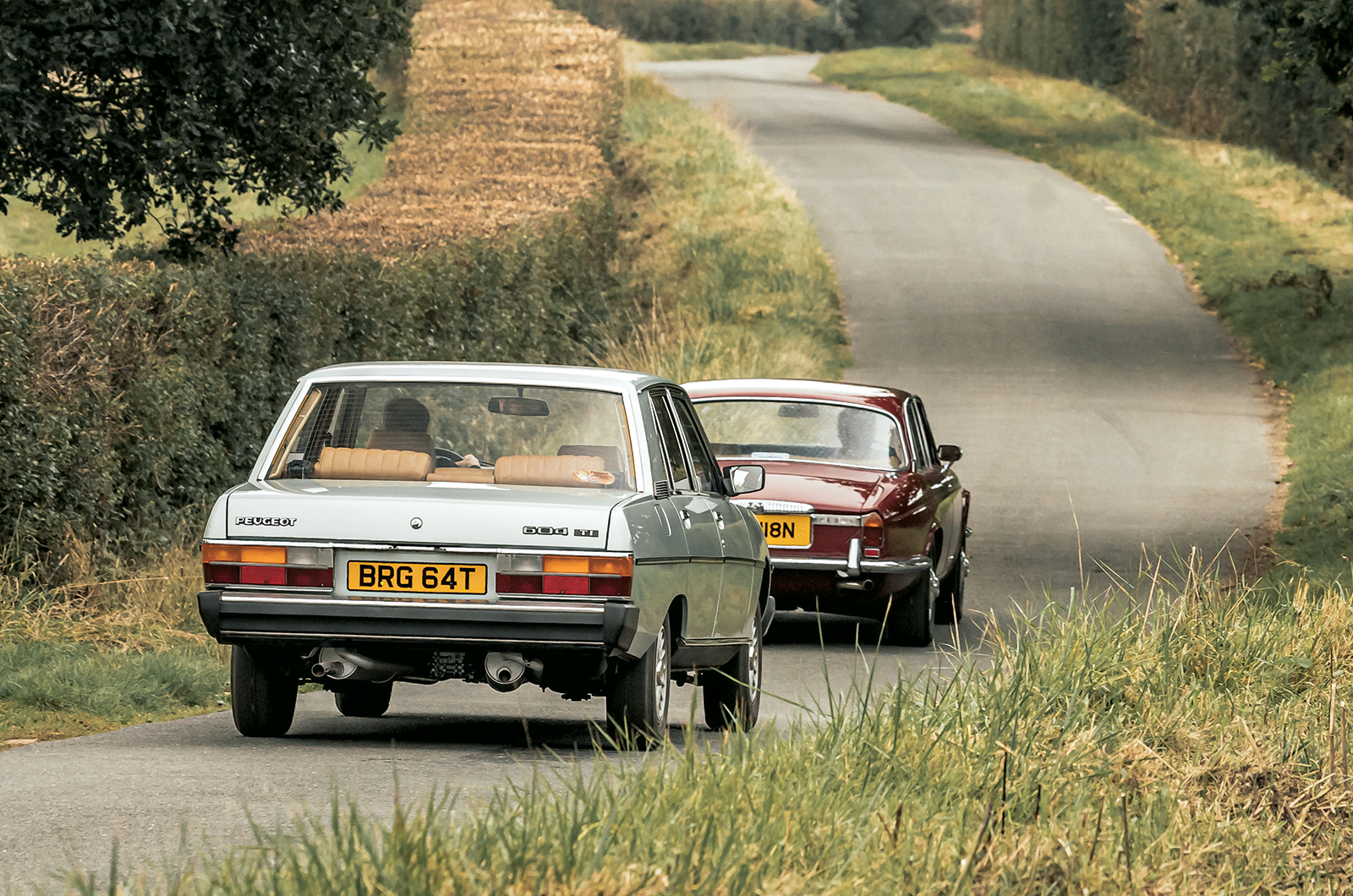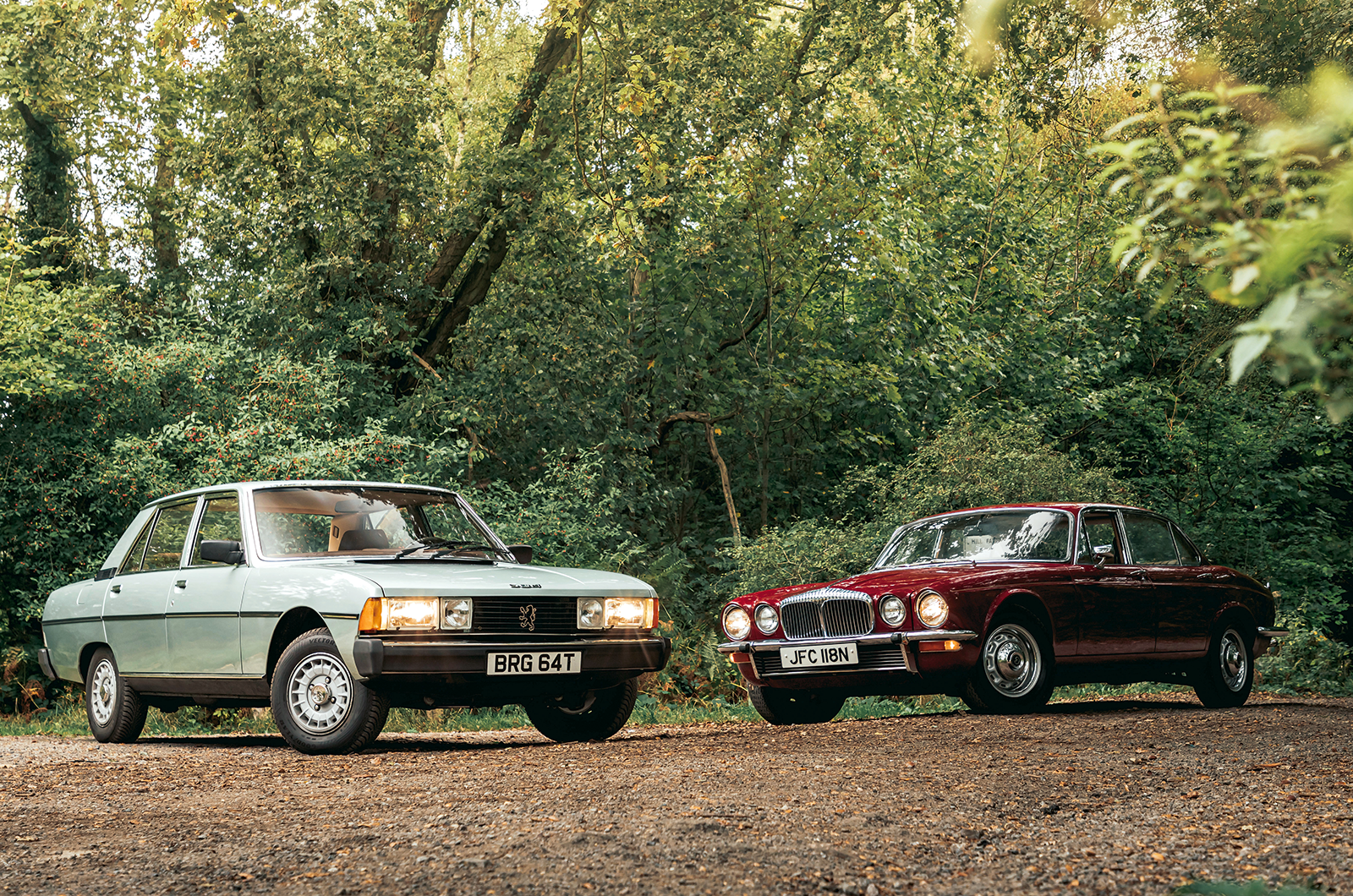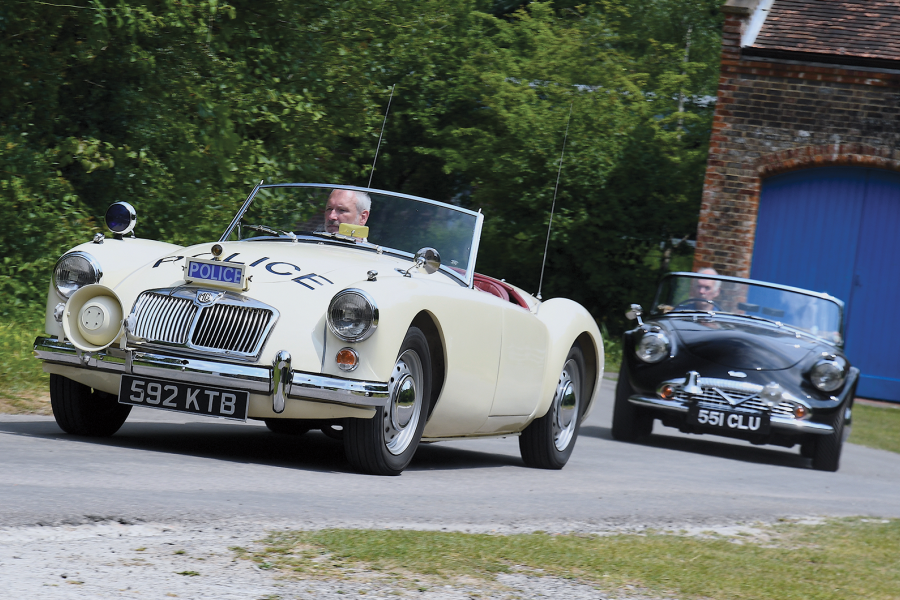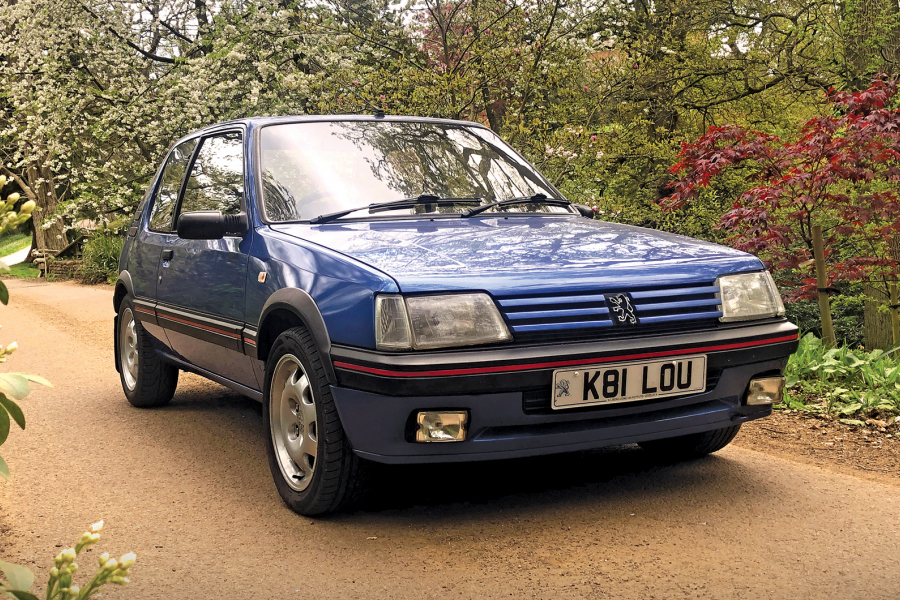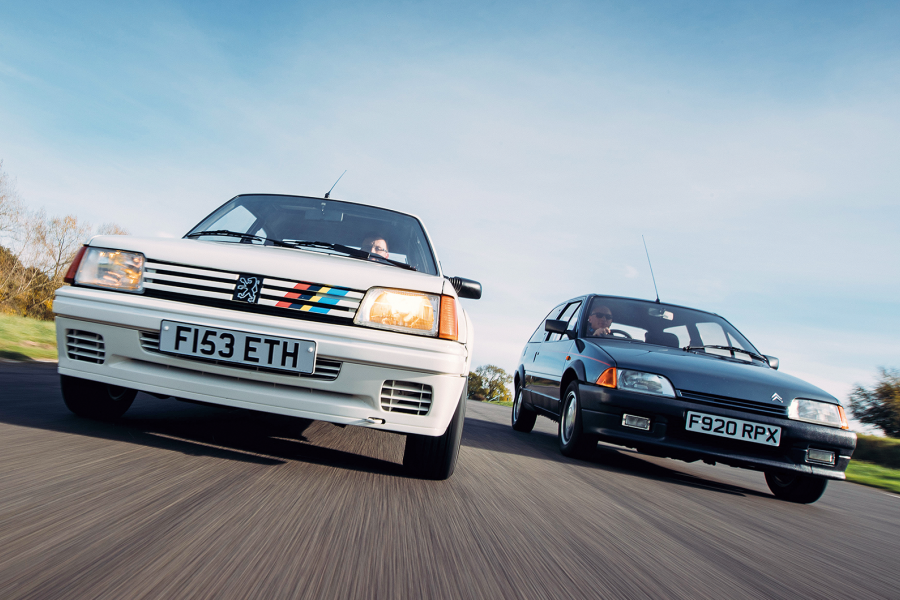There is not much point in using more than 3500-4000rpm in the Sovereign, at which point a remote if well-bred growl is beginning to disturb the peace.
The 604’s silky V6 revs out freely, offering a slightly busy but not unpleasant sound.
It changes gear more positively than the slightly slurring efforts of the XJ’s three-speed auto – courtesy of Messrs Borg and Warner – and can summon its part-throttle kickdown more readily, so it always feels lively.
Both cars are cloister-calm when cruising – wind noise is lower in the Daimler – but would be nicer machines with higher gearing.
The Peugeot 604 TI has an inviting cabin, but some of the trim feels cheap
The light engine makes the 604 well balanced front-to-rear and nimble on the road, with the feeling of something smaller and lighter, and it combines this sense of agility with a ride so good you wonder what designers have been up to for the intervening 40-odd years.
It shares with the XJ a sense of indifference to bumps, potholes and noise-inducing surface textures that is uncanny.
Carefully calibrated dampers are the secret (Peugeot was unique in making its own), plus the aforementioned hefty bushes to filter out noise.
Clear but workmanlike dials in the Peugeot 604 TI
In this respect the Peugeot might just have the edge on the XJ, but the British car – with its uncompromising, quad-damped and carefully isolated rear end – has less low-speed bump-thump and, because it manages roll and pitch more effectively than the 604, tends to cause its occupants less disquiet when driven hard.
The Peugeot’s steering has the weight and feel to make the car slightly handier.
Jaguar/Daimler customers liked the light, slightly detached feeling of the XJ’s otherwise pleasant helm, but drive briskly through a succession of curves and it can leave you guessing a little as to how quickly the understeer is building.
The Peugeot 604’s rear passengers are well cared for
Both of these superbly refined 1970s saloons were created with an understanding that the ability to connect two places at high speed with as little effort but as much pleasure as possible – for both driver and passengers – is the true definition of luxury in an automobile.
They were designed with a sense of finesse and judgement that long predated an obsession with Nürburgring handling.
The XJ6 set such a high standard in so many areas, yet it was such good value that it made many much more exotic cars seem irrelevant.
Pretty and poised, it is still an irresistible package in so many ways (if a rather familiar one) that it wins the sentimental vote because it feels not only so English, but also so personal to the characters that created it.
‘Both were designed with a sense of finesse and judgement that predated an obsession with Nürburgring handling’
Not so the Peugeot 604: it was, and is, a fine car – perhaps the definitive big Euro saloon of its day – designed with absolute competence by the world’s second-oldest car maker, yet lacking a crucial element of charm, Gallic or otherwise.
Almost four decades after its demise, sheer rarity value makes up for this: fewer than 20 examples are thought to remain on British roads.
It has become a symbol of futility and failure in the realm of overreaching luxury-car ambitions of ‘bread-and-butter’ marques that didn’t know their place.
The Daimler (furthest) is more potent on paper, but its extra mass levels the performance
Yet the 604 was not a straightforward commercial disaster.
When sales of the model ended in 1985, 153,252 of them had been produced, making the big Peugeot marginally less popular than the Renault 30, if nothing like as numerous as the various premium-brand rivals from Stuttgart, Munich and Coventry’s Browns Lane built during the same period.
The Jaguar XJ series remained the car to beat, even in the face of the better-quality German opposition.
The remarkable thing about the Peugeot 604 is that, in the areas that really mattered, it probably got closer to matching the Jaguar than any other car.
Images: Max Edleston
Thanks to: HC Classics; Robert Hughes Automobiles
Factfiles
Peugeot 604 TI
- Sold/number built 1975-’85/153,252 (all)
- Construction steel monocoque
- Engine all-alloy, sohc-per-bank 2664cc 90° V6, Bosch K-Jetronic fuel injection
- Max power 142bhp @ 5500rpm
- Max torque 160Ib ft @ 3000rpm
- Transmission three-speed auto, RWD
- Suspension independent, at front by struts, lower wishbones rear semi-trailing arms, coil springs, telescopic dampers; anti-roll bar f/r
- Steering power-assisted rack and pinion
- Brakes discs, with servo
- Length 15ft 5½in (4712mm)
- Width 5ft 9½in (1765mm)
- Height 4ft 6½in (1384mm)
- Wheelbase 9ft 2in (2794mm)
- Weight 3200Ib (1451kg)
- Mpg 18
- 0-60mph 11.3 secs
- Top speed 117mph
- Price new £13,995
- Price now £15,000*
Daimler Sovereign S2 4.2
- Sold/number built 1973-’79/11,825 (including coupés)
- Construction steel monocoque
- Engine iron-block, alloy-head, dohc 4235cc straight-six, twin SU carburettors
- Max power 170bhp @ 4500rpm
- Max torque 231Ib ft @ 3500rpm
- Transmission three-speed auto, RWD
- Suspension independent, at front by wishbones, coil springs, anti-roll bar rear lower wishbones/upper driveshaft link, radius arms, twin spring/damper units
- Steering power-assisted rack and pinion
- Brakes discs, with servo
- Length 16ft 2¾in (4947mm)
- Width 5ft 9¼in (1759mm)
- Height 4ft 6in (1372mm)
- Wheelbase 9ft 4¾in (2864mm)
- Weight 3700Ib (1678kg)
- Mpg 15
- 0-60mph 10.1 secs
- Top speed 120mph
- Price new £5823
- Price now £25,000*
*Prices correct at date of original publication
Enjoy more of the world’s best classic car content every month when you subscribe to C&SC – get our latest deals here
READ MORE
Why the Jaguar XJ is the world’s best saloon car
Peugeot 504 Break Riviera: Pininfarina perfection
This is the modern world: Chrysler 2 Litre, Peugeot 504GL & Fiat 132
Martin Buckley
Senior Contributor, Classic & Sports Car

